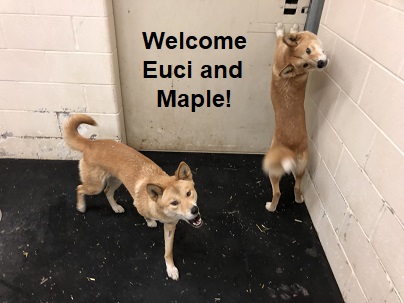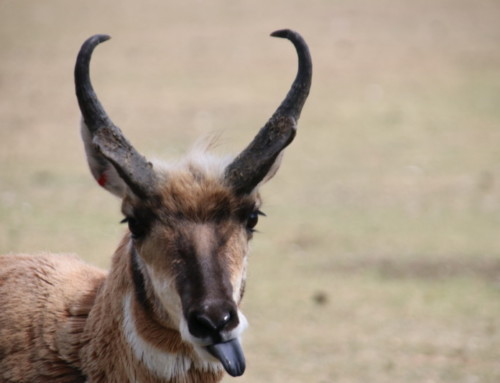The Dingoes have arrived! As of August 9, 2019 the Dingoes will be out in their new home at the Saskatoon Forestry Farm Park and Zoo
The Dingo by Claire Bullaro
Beyond the Fence by J. K. Brand
“Dawn comes brightly
with silence here
No song of river nor
orchard birds here
suddenly from behind dry tussocks
a land bridge or canoe traveller
from a green old world land
thriving here on a new one’s husk:
canis lupus dingo”
The Dingo, Canis lupus dingo, or Canis dingo, or Canis familiaris dingo, or Warrigal has been on the continent of Australia for probably longer than 4,000 years and it is believed that they arrived with some early settlers but it is not at all sure how or when they arrived. The name Dingo is also used for wild dogs found on Malaysia, the Philippines, New Guinea, and Thailand. The earliest Dingo fossil records from Australia are from between 3,000 and 4,000 years ago but many believe they were present well before that. It is not known if they were semi-tame canids that then became feral. They appeared in Southeast Asia and Australia with sea travelers and were probably not yet truly domesticated
The Dingo resembles the domestic dog but with a longer muzzle and larger, erect ears. It has more massive molars and longer, more slender canine teeth. Their fur is short and soft and they have a bushy tail. Colour is generally reddish or yellowish brown with white underparts. They can also have a lot of black fur on their bodies or even be all white. Body length, including the tail is 120 cm and they are 24 cm at the shoulder. Females are generally slightly smaller than the males. A mature male averages 44 kg. Like many of our North American canids, Dingoes birth their four or five pups in sheltered areas such as caves, hollow logs or dug out rabbit warrens.
They can live singly or in groups of two to a dozen and their territories can range up to 115 square kilometers. Groups scent mark their territories and there is usually little overlap. Howling also helps designate territory. They rarely bark but have such a variety of howls that they are sometimes called “singing dogs”.
They are carnivores and historically hunted kangaroos and wallabies but their diet changed with the introduction of rabbits and the red fox when Europeans arrived. Historically they may have out-competed both the Tasmanian Devil and the Tasmanian Wolf, causing their extinction on the mainland. Because they will also prey on livestock they have been considered pests and there have been programs to shoot them to eliminate them from certain areas. A 5614 km long Dingo fence has been put up across Australia to keep them from coming in from the outback. Humans, thinking that they look so much like a regular dog have had unfortunate interactions and some have been injured or killed by Dingoes. There has been interbreeding with domestic dogs and some have been tamed as pets. Some Aborigines also keep them as pets. They are considered to be a Vulnerable Species by the International Union for Conservation of Nature (IUCN).
The genetics of the Dingo are very complicated and interbreeding with domestic dogs has only confused things. The only generally pure animals are now found on Fraser Island off the coast of Queensland, which has a World Heritage area where they are protected. There are about 180 to 220 Dingoes on the island and people are educated as to how to avoid conflict when visiting. Genetic studies have proposed that the Dingo, the wolf, and our familiar domestic dogs have all evolved from a long ago common ancestor. Current research has found that all modern wolf species are more closely related to each other than to domestic dogs and that the Dingo and domestic dogs, such as the boxer and basenji, are more closely related to each other than to wolves. Domestic dogs have genes that allow them to digest grains indicating that they evolved with humans when humans began to do farming rather than strictly hunting. Dingoes are much less likely to have those genes indicating that they evolved during humans hunter-gatherer stage.
“Perhaps, then, the dingo is today’s living dog that most closely resembles the first dogs that evolved from a long-gone wolf-like ancestor, somewhere between 10,000 and 34,000 years ago.” https://www.australiangeographic.com.au/blogs/austropalaeo/2014/05/dawn-of-the-dingo/


